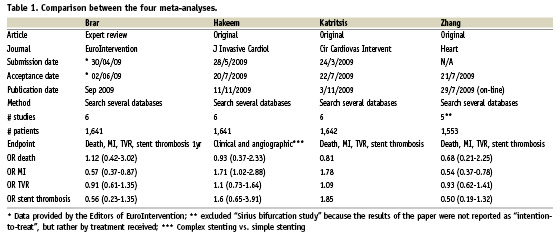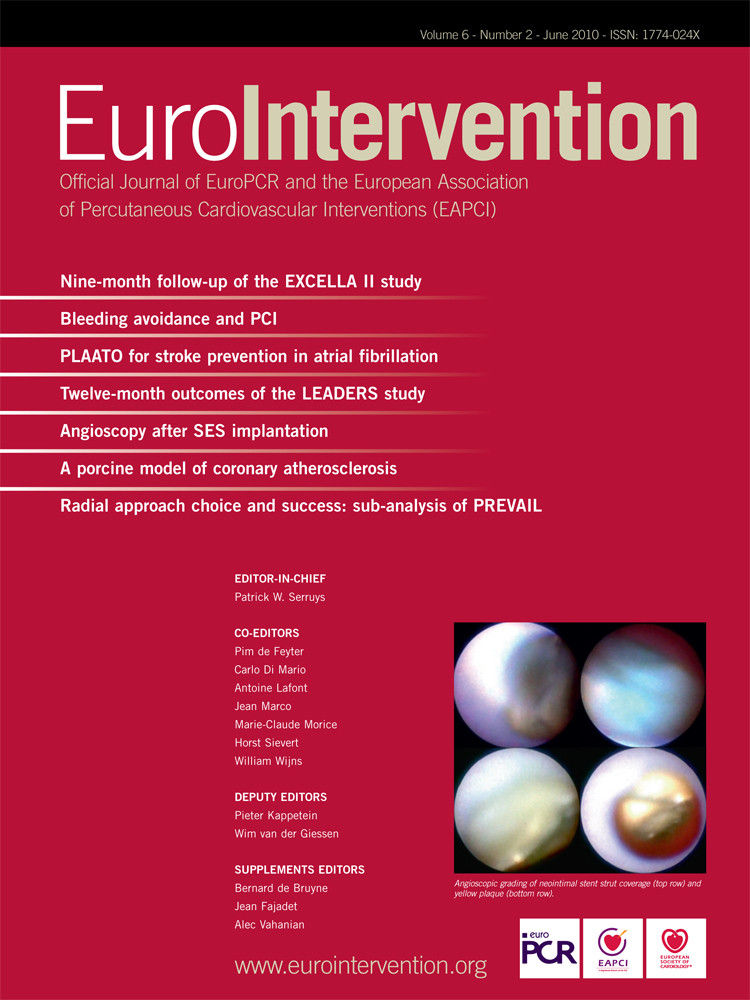The avoidance of redundant publication is the core of the editorial task; therefore editors have established clear policies posted in their instructions for authors. The term “redundant publication” has always been used for research reported by the same author and sent to two or more different journals. We report here on a different situation that also results in “unplanned redundant publication”.
We bring to your attention the following facts relating to the meta-analysis published in Heart in 2009 by Zhang et al1. We have found out that four very similar meta-analyses on the same subject were published last year in different journals within a six month period, by different investigators working at different institutions. The enclosed table contains the relevant details of the four publications.
Several comments are pertinent on this issue. Neither the editors nor the authors could have been aware of the redundancy because they were written simultaneously and accepted during the same week of July (this data was not available at the time of submitting this letter). Likewise, the same worrying considerations apply to this surprising situation in that there has been a waste of reviewers’ and readers’ time, as well as published pages. It is worth noting that both a general cardiology journal such as Heart1 and subspecialty ones, such as the Journal of Invasive Cardiology2, Circulation Cardiovascular Intervention3 and EuroIntervention4 have found the article appealing. In three cases the publications were original articles, while the last one was an expert review; remarkably, only one journal has impact factor. This unfortunate coincidence could be further deleterious for all these journals, as they will be competing for citations on the very same topic. Although this letter focuses on the editorial aspects of this coincidence, it is also interesting to consider that, even though the main conclusions of the four articles are identical, the results of the meta-analyses are slightly different due probably to the methods used. We have also analysed a possible trigger for this sudden interest in this topic, but could not find any reasonable explanation.


